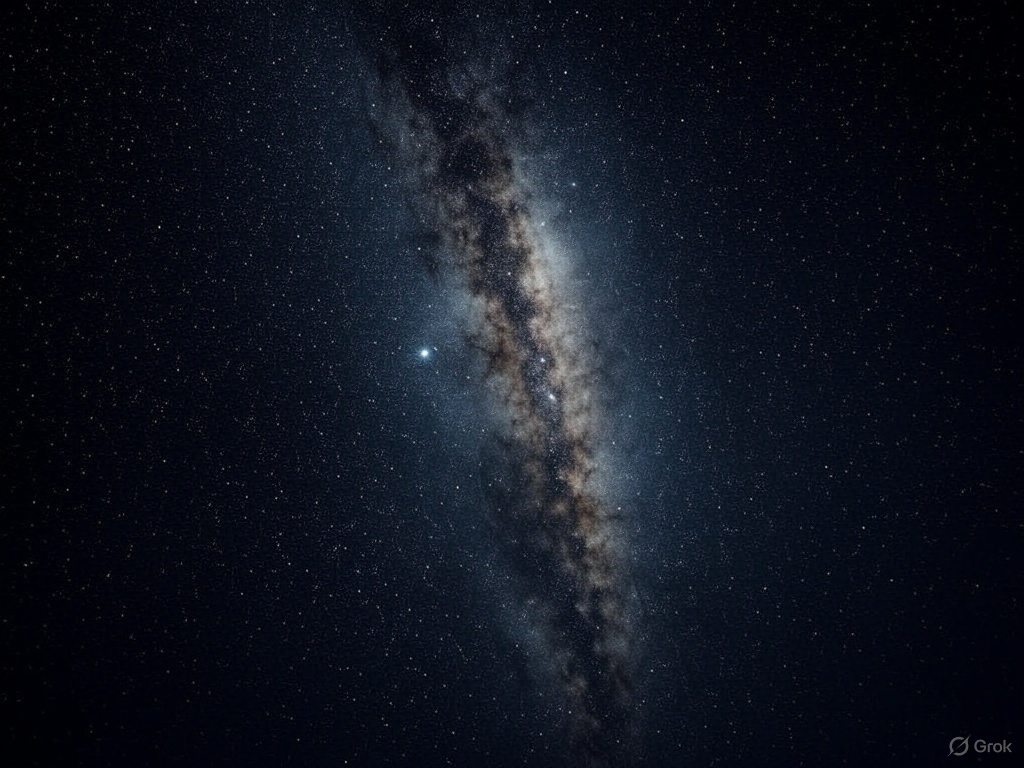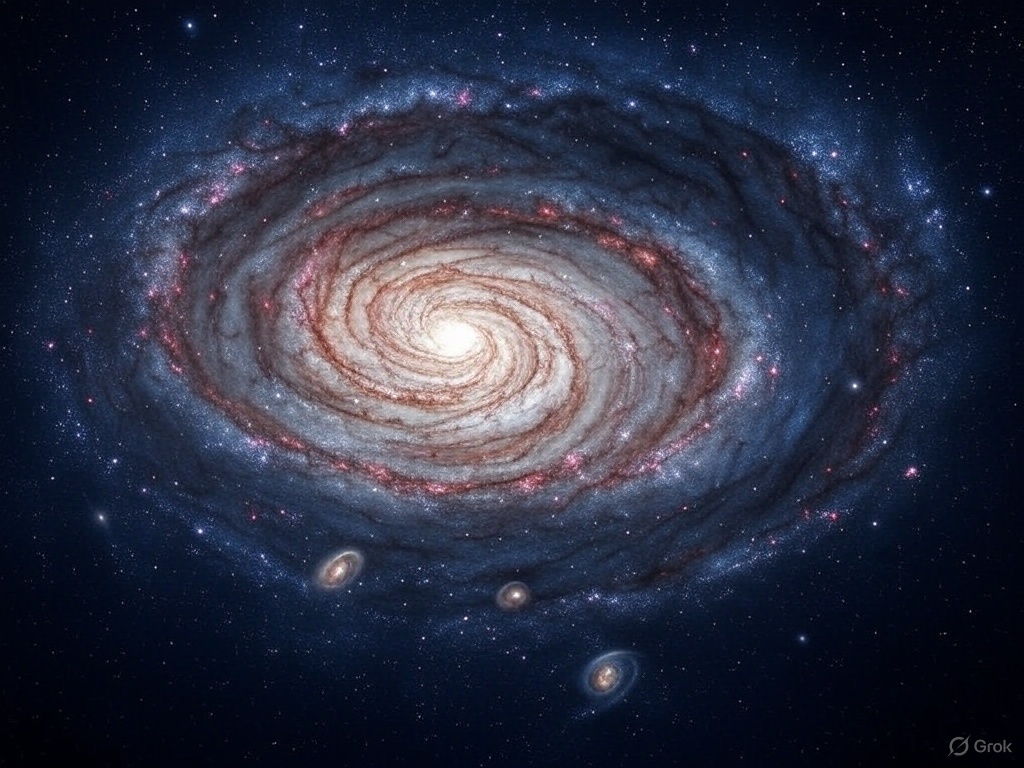Reference by : Mr & Mrs Gao老高與小茉 – 宇宙有多大
Have you ever looked up at the night sky and wondered just how far it stretches? I recently stumbled across a fascinating topic from Mr & Mrs Gao (老高與小茉), the YouTube duo who make mind-bending concepts feel like a chat with friends. In their style, they’d probably kick things off with something like: “Hey everyone, it’s Mr Gao here with Little Mo—today, we’re tackling a question that’s as big as it gets: How vast is the universe, and could we ever travel across it?” That’s the spark that got me thinking, and now I’m diving deep to share the cosmic scoop with you.
The universe is vast beyond imagination, and its size challenges our understanding of space and time. Let’s dive into its scale, what it contains, and even how long it might take to travel across just a tiny fraction of it—like from Earth to the edge of our own galaxy, the Milky Way. Buckle up for a cosmic journey!
The Observable Universe: What We Can See
The part of the universe we can observe is called the observable universe, and it’s about 93 billion light-years across. A light-year is the distance light travels in one year—roughly 9.46 trillion kilometers (5.88 trillion miles)—so this means light from the farthest objects we can see has been traveling for billions of years to reach us. The observable universe’s radius is about 46.5 billion light-years, but don’t be fooled: the universe didn’t just grow to 13.8 billion light-years (its age) because it’s been expanding the whole time. This expansion stretches space itself, making the observable part much bigger than you’d expect.
But here’s the kicker: the observable universe is just a small bubble. The total universe could be way larger—maybe even infinite. Some estimates suggest it’s at least 250 times bigger than what we can see, potentially stretching 7 trillion light-years or more. We’ll never know for sure because light from beyond our observable edge can’t reach us, thanks to the universe’s accelerating expansion.

What’s Inside This Cosmic Expanse?
The universe is packed with wonders:
- Galaxies: Billions of them, each with billions or trillions of stars. Our Milky Way is about 100,000 light-years wide, but giants like IC 1101 span 5.5-6 million light-years and hold over 100 trillion stars.
- Stars: From our Sun (1.39 million km wide) to monsters like UY Scuti, which is 2,000 times bigger across—imagine a star so huge it’d swallow everything out to Saturn if it replaced our Sun!
- Black Holes: Supermassive ones, like in galaxy OJ 287, weigh 18 billion times our Sun’s mass, with an event horizon 12 times wider than Neptune’s orbit.
- Cosmic Web: Galaxies cluster into superclusters and filaments, like the Sloan Great Wall, stretching 1.37 billion light-years. It’s like a giant spiderweb of light and matter across the void.
The universe started with the Big Bang 13.8 billion years ago and has been expanding ever since, pushed by mysterious dark energy. This expansion means distant galaxies are racing away from us, and some are so far that their light will never catch up.
Traveling Across the Galaxy: How Long Would It Take?
Let’s zoom in from the universe to our own Milky Way galaxy and imagine a trip from Earth to its edge. The Milky Way is roughly 100,000 light-years in diameter, and Earth sits about 27,000 light-years from the galactic center, in one of its spiral arms (the Orion Arm). That puts us about 23,000 light-years from the nearest edge and up to 73,000 light-years from the farthest edge, depending on the direction.

How long would it take to get there? Let’s break it down with some real-world and sci-fi examples:
- Current Technology: NASA’s Space Shuttle Speed
- The Space Shuttle orbited Earth at about 28,000 km/h (17,500 mph). At that speed, traveling 23,000 light-years (the distance to the nearest edge) would take:
- 1 light-year = 9.46 trillion km
- 23,000 light-years = 217.58 quadrillion km
- Time = 217.58 quadrillion km ÷ 28,000 km/h = 7.77 trillion hours, or about 886 million years.
- For the farthest edge (73,000 light-years), it’d be closer to 2.8 billion years. That’s longer than Earth has existed (4.54 billion years)!
- The Space Shuttle orbited Earth at about 28,000 km/h (17,500 mph). At that speed, traveling 23,000 light-years (the distance to the nearest edge) would take:
- Fastest Human-Made Object: X-43A
- NASA’s X-43A hit 12,144 km/h (7,546 mph). At this speed:
- 23,000 light-years = 17.9 trillion hours, or 2 billion years.
- 73,000 light-years = 5.7 billion years. Still geological timescales!
- NASA’s X-43A hit 12,144 km/h (7,546 mph). At this speed:
- Light Speed (Science Fiction Style)
- Light travels at 299,792 km/s (671 million mph), so 23,000 light-years takes exactly 23,000 years, and 73,000 light-years takes 73,000 years. Even at this ultimate speed, it’s far beyond a human lifetime. Plus, Einstein’s relativity says we can’t reach light speed with mass—sorry, sci-fi fans!
- Star Trek Warp Speed (Warp 9)
- In Star Trek, Warp 9 is roughly 1,516 times the speed of light (based on the official scale). At that speed:
- 23,000 light-years ÷ 1,516 = 15.17 years.
- 73,000 light-years ÷ 1,516 = 48.15 years.
- Now that’s more blog-worthy! You could zip to the edge in a generation—if only warp drives were real.
- In Star Trek, Warp 9 is roughly 1,516 times the speed of light (based on the official scale). At that speed:
Realistically, with today’s tech, even reaching the nearest star (Proxima Centauri, 4.24 light-years away) would take over 100,000 years at shuttle speeds. Space is so vast that even our galaxy feels like an endless frontier.
Why It Matters
The universe’s size isn’t just a number—it’s a reminder of how small we are and how much there is to explore. From Earth to the Milky Way’s edge is a tiny hop compared to the observable universe, yet it’s still beyond our reach for now. The total universe might stretch infinitely, hiding mysteries we’ll never see. It’s humbling and thrilling all at once.
So, next time you look up at the stars, think about this: even traveling to the edge of our galaxy is a cosmic marathon, and the universe is a race with no finish line.